
Located near Veszprém and close to Lake Balaton is the abandoned city of Szentkirályszabadja (pronunciation here). About a 45 minute drive from our house, my friends and I visited “Hungary’s Chornobyl” on a sunny afternoon in 2020. One of many abandoned Soviet sites in the country, the largest ghost town in Hungary was a once-bustling city that included schools, a theater, pubs, hotels, and restaurants. There was no major catalyst or harrowing event that took place here; Szentkirályszabadja was simply and gradually abandoned by its inhabitants leading up to the fall of the USSR.
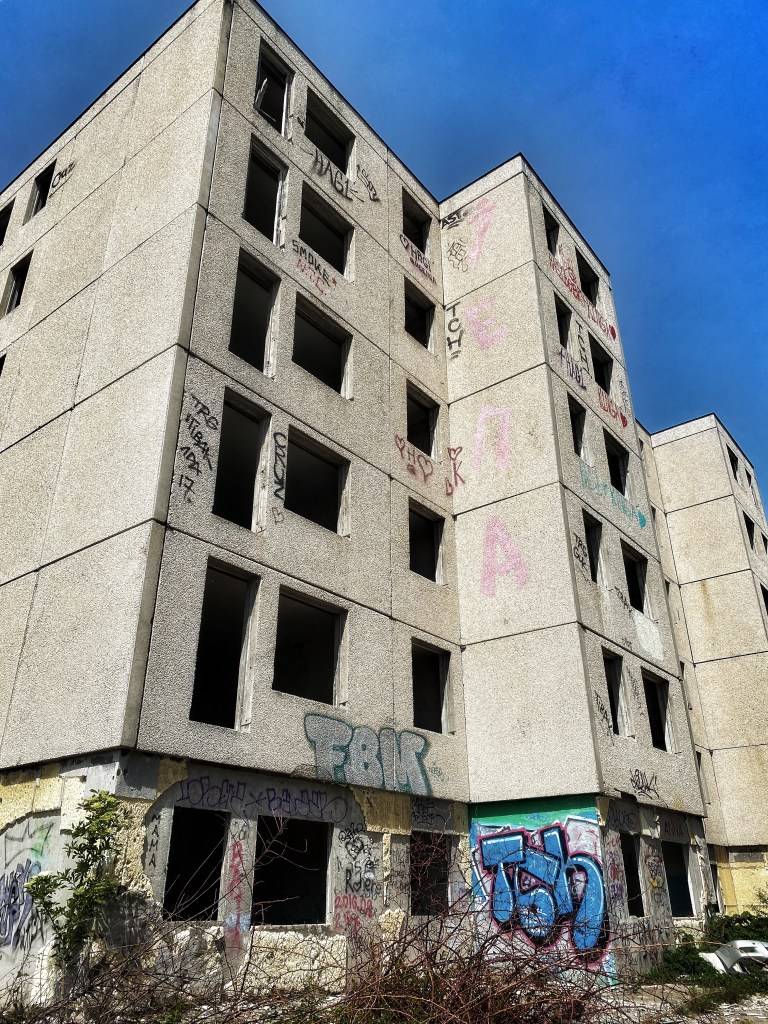
One of the most interesting aspects of living in eastern Europe–and especially Hungary–is seeing many of the then- Soviet sites during occupation (or maybe its just me as a Russian Studies nerd). There were a few locations close to our home that I attempted–and sometimes succeeded to find–in our four years there. The Hajmáskér Barracks, Fort Monostor, and the State Defense Authority (ÁVH)’s gulag in Recsk are upcoming posts.
Near Szentkirályszabadja is the “Little Moscow” nuclear storage site located in the densely wooded area of Urkut. The base included a sawmill, tea shop, general store, and even a cabbage fermenter; the nuclear warheads were transported to Urkut by truck and housed underground. Now uninhabited, there are two roads leading into the location that once included bunkers for Soviet soldiers and storage for nuclear weapons. Driving through Urkut, you would never know that the USSR hid warheads and stationed troops in the deep forests of western Hungary, but here we are!
My friends and I drove to the overgrown base in Urkut and found the still-guarded entrance; while I love a good light trespassing adventure, breaking into a former underground nuclear weapons storage site was a bit too much even for me; we stuck to wandering around the streets of Szentkirályszabadja instead.
However, there are a couple of great sites (here and here) of first-hand observations detailing all of the former Soviet sites in Hungary, including a great overview of Urkut if you’re interested in learning and seeing more of the former operations here.

Source
A research caveat: finding information on a now-abandoned, somewhat secret Soviet base and city in rural Hungary is–as you can imagine–a little difficult. The research compiled here is mostly derived from on-the-ground folks and older US documents (the CIA’s Warsaw Pact Forces Opposite NATO is a good one). This post is a combination of found research on Szentkirályszabadja and my own observations walking the city.
Where are we?
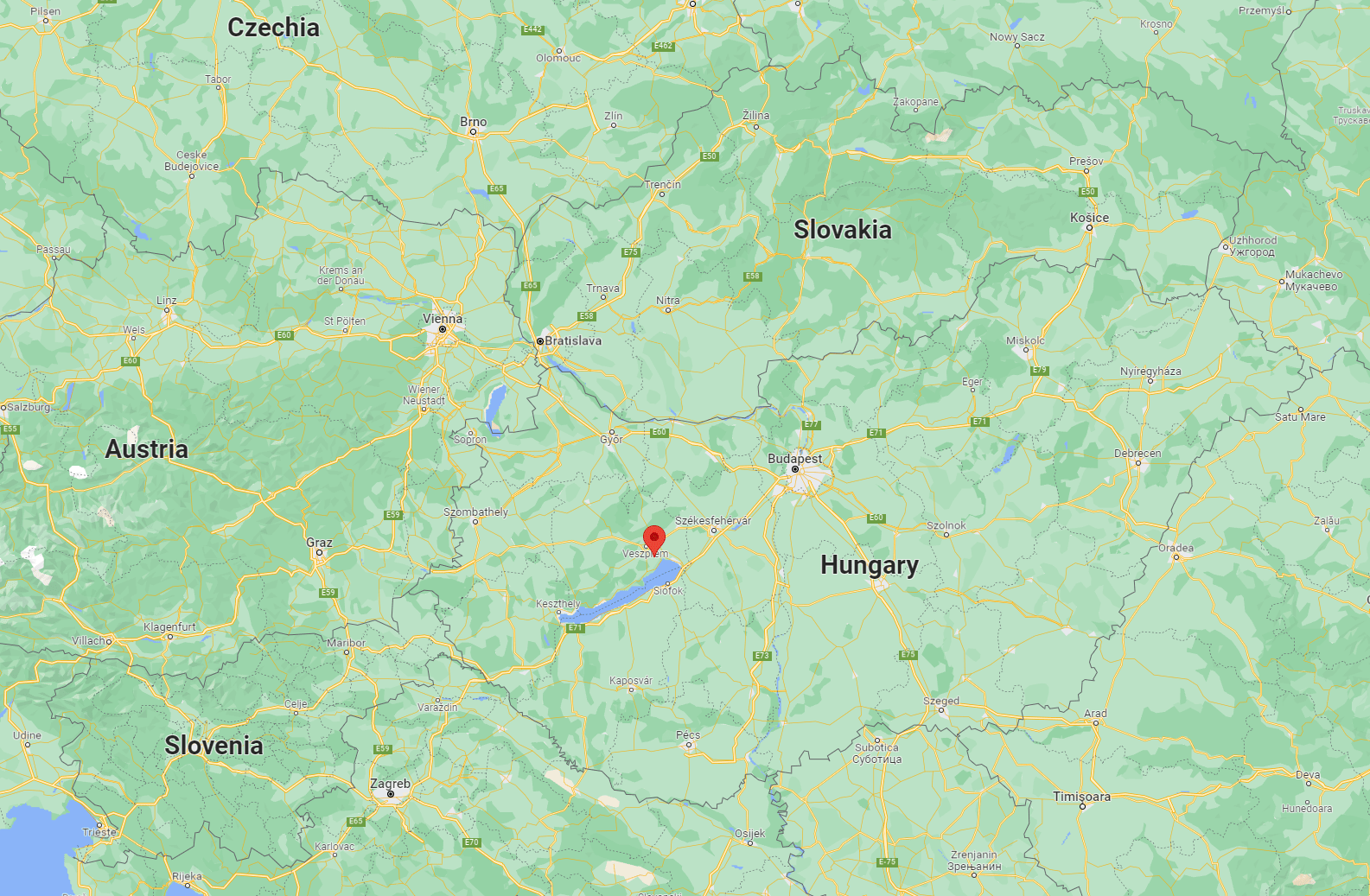
Located about 10 km from Lake Balaton is the airfield of Szentkirályszabadja. Near the airfield is both the Hungarian village of Szentkirályszabadja–still inhabited today–and the abandoned Soviet city of the same name. Prior to Soviet occupation, this area was used as an airbase with a training academy; you can still see a number of deteriorating buildings made of stone that stand in stark opposition to the massive Soviet structures of the 1980s. The Soviets decided to build an all-inclusive city for the soldiers stationed here (mainly Russian and Ukrainian) and their families beginning in the 1960s.

Source
The entrance to the abandoned city is one long road–NOT a path through a field as we originally thought lol–without signage or any visible markers. Szentkirályszabadja was a Pripyat-style city meant to meet the needs of those who lived here without having to leave the area. Unlike Pripyat, there was no nuclear meltdown; residents simply slowly evacuated the city as it became clear that the Soviet Union was collapsing.

During the Cold War the base and airfield were used for major helicopter operations and roughly 6 – 8 thousand people lived here. At the time (and honestly today as well) Szentkirályszabadja was a pretty isolated location and not much was known about the base or its inhabitants, beyond that they were Soviet soldiers and their families. Similar to Ukraine’s Pripyat–marketed as a “city of the future”–Szentkirályszabadja and its amenities were considered a luxury for the standards at the time. In addition to the theater, schools, pubs, and restaurants, the city also included five blocks of flats, sports fields, a meat processing plant and farms, a post office, grocery store, and wine cellar.

The dismantling of the base was slow and secret; combat equipment including missiles were taken apart and driven through the dense woods to avoid satellite detection. The Soviets officially withdrew from Hungary in 1989 and Szentkirályszabadja was completely abandoned. In 1996, looting of anything of value (including building supplies) took place and not much of Soviet life (beyond the physical structures) remains here today.

Following the end of Soviet occupation, the Hungarians closed a number of military sites, including the airfield in Szentkirályszabadja (a watchtower remains so technically its an operational airfield, but flights are not landing and taking off from here). From what research I can find, the helicopters used here were moved to the nearby Pápa Air Base, a location with its own unique history. The now NATO reserve base was used by Germans and Hungarians during WWII–the largest air base of the Royal Hungarian Air Force at the time–then as a Soviet fighter base from 1945-1961, and the home regiment of the Hungarian People’s Army’s Air Force 47th Fighter Regiment in 1961; one of the MiG-21F aircraft is on display at a roundabout in Pápa.

Today, there is controversy over who “owns” Szentkirályszabadja; currently the area on either side of the ghost town is used by a privately owned transportation company. While we wandered the streets large semis drove past us from one side to the other. For folks who work here, the trip through a deserted and deteriorating city is just part of the commute.
Szentkirályszabadja:
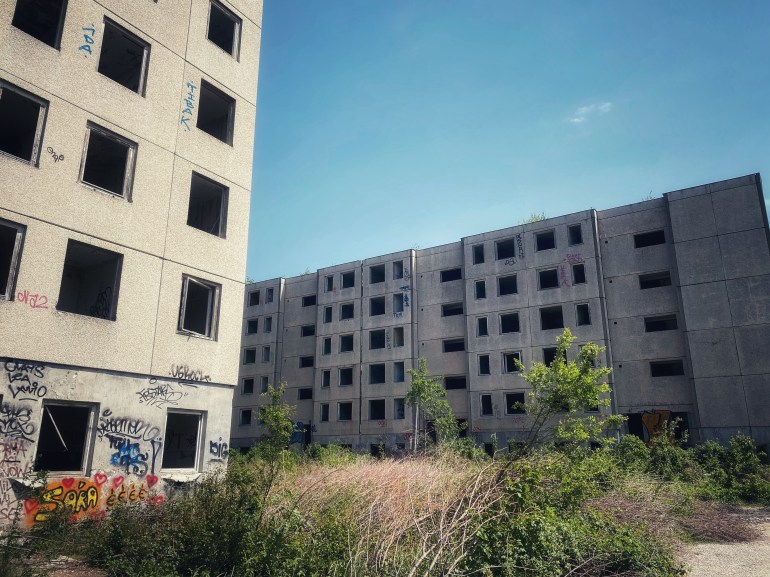



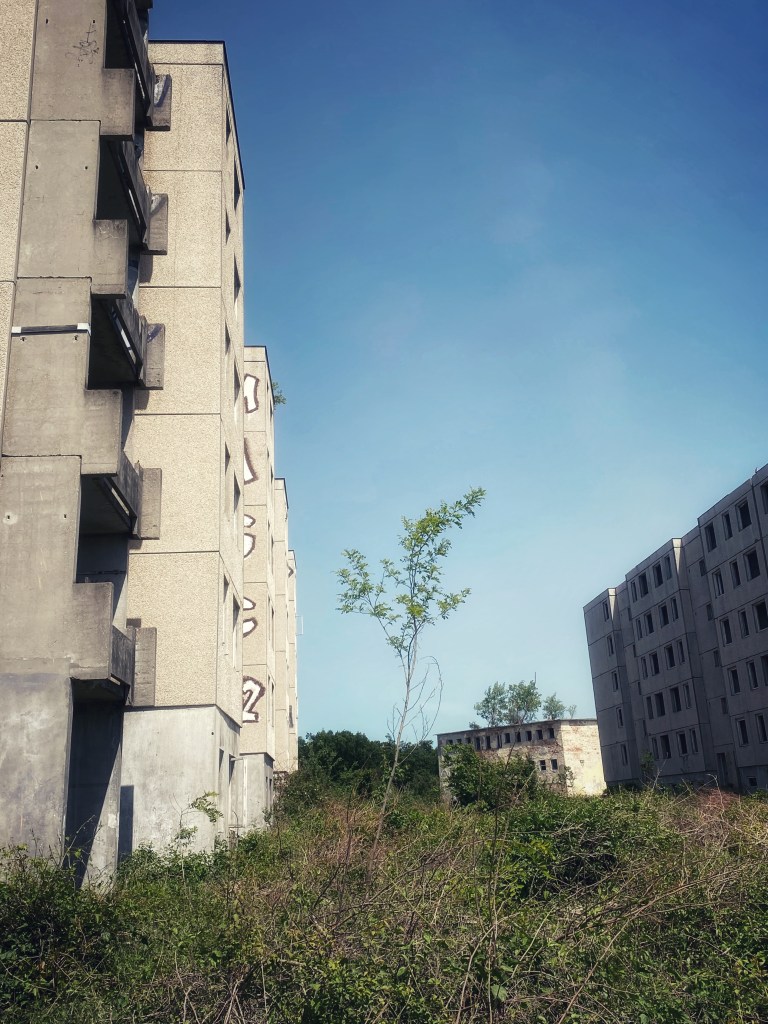

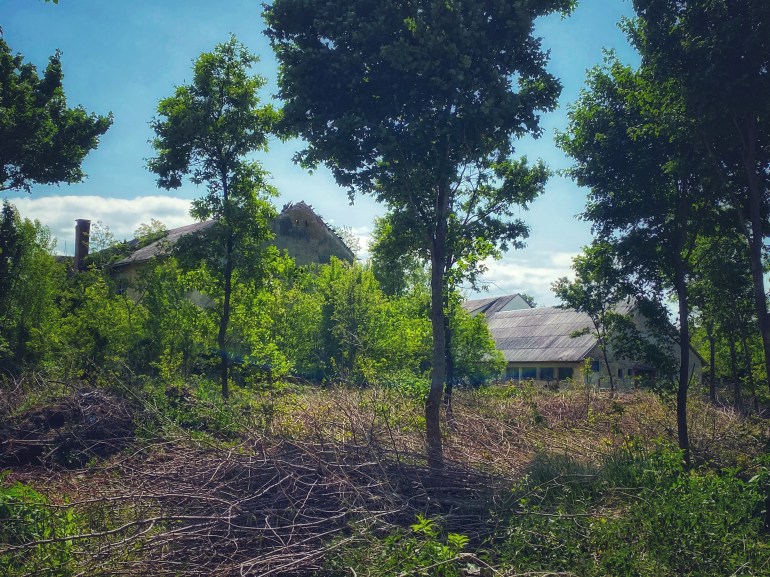





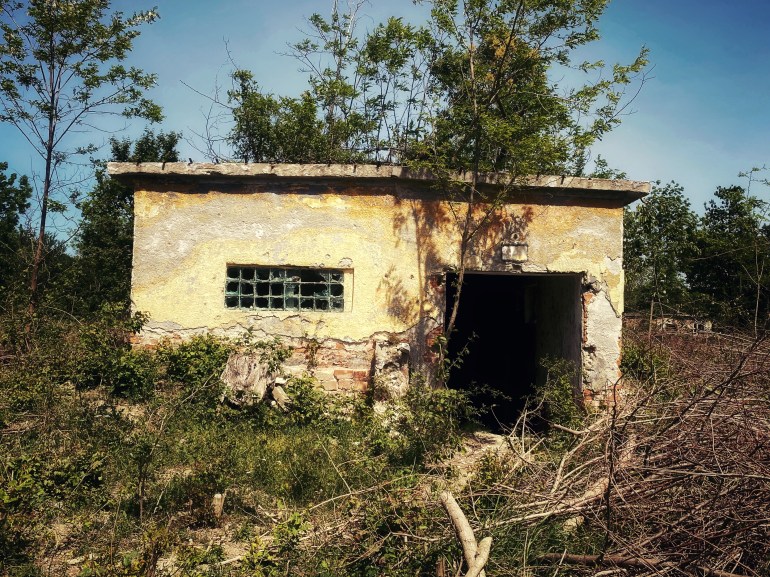

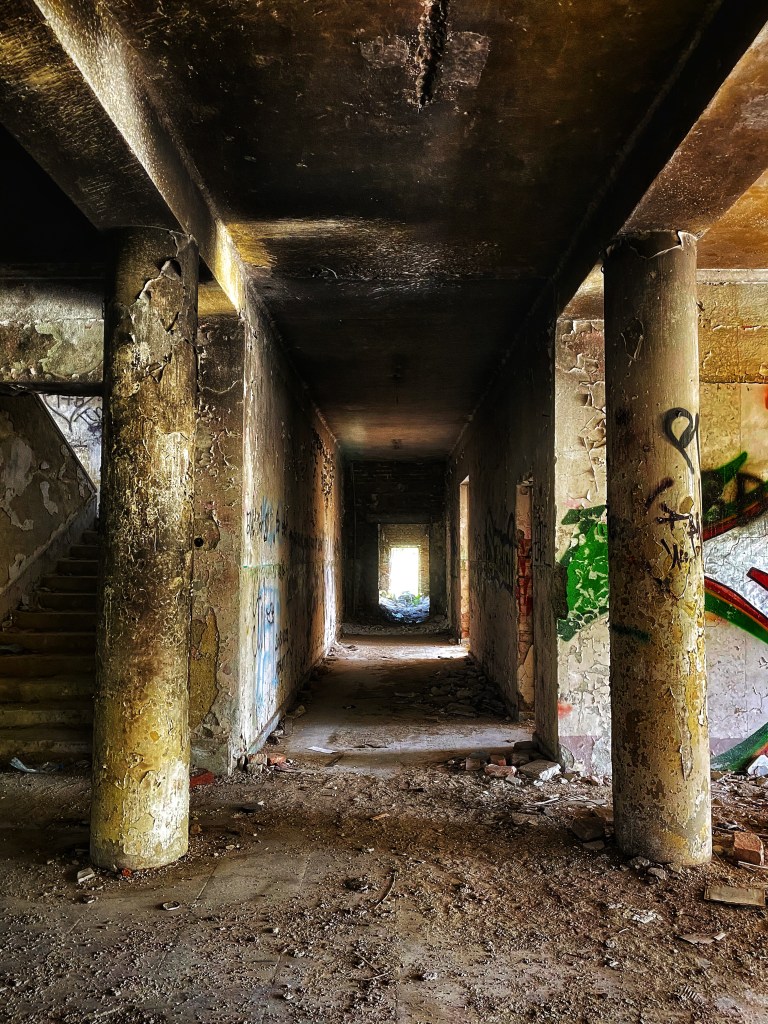
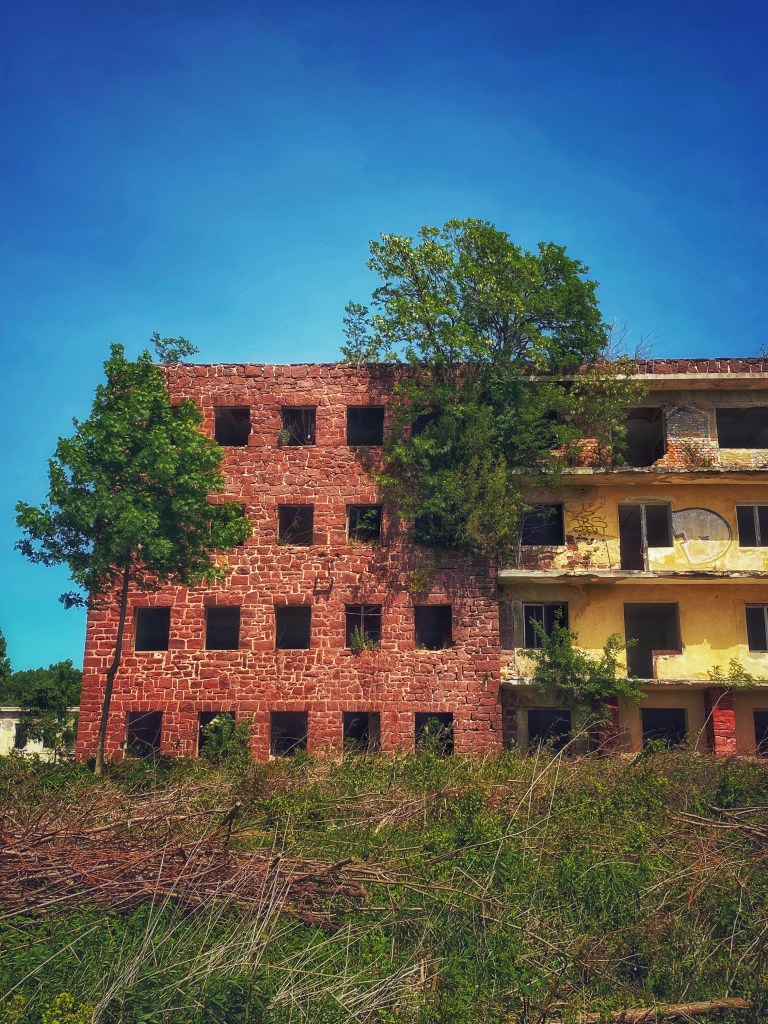

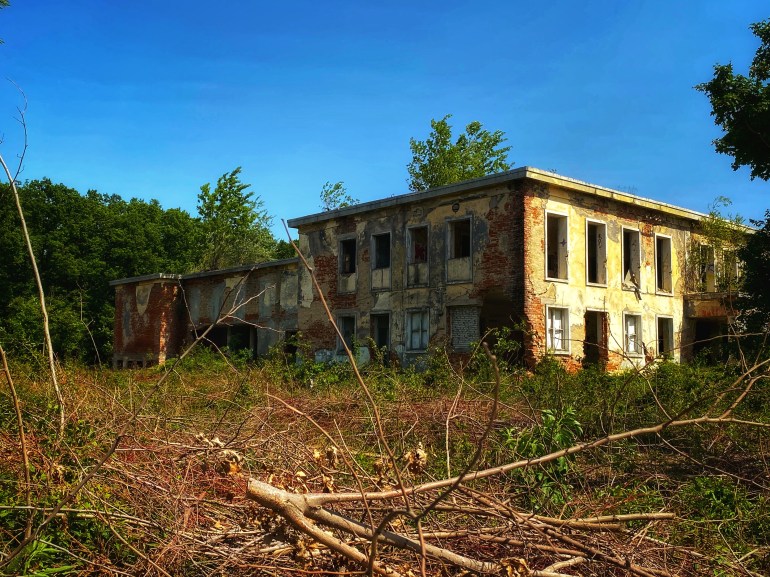



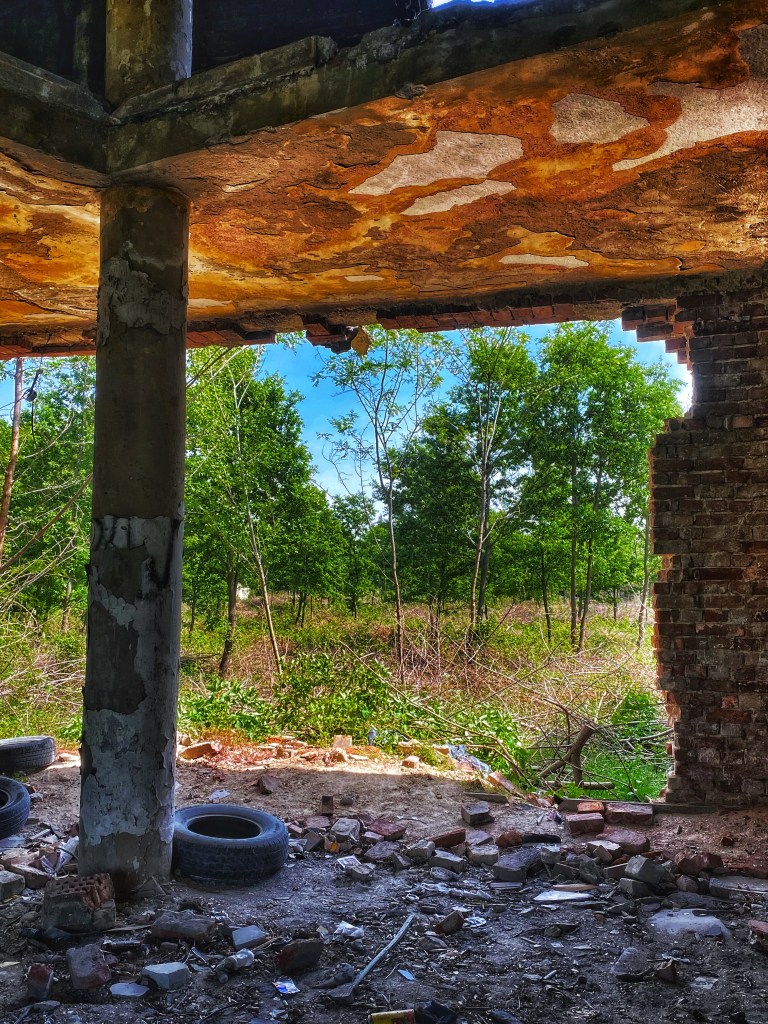
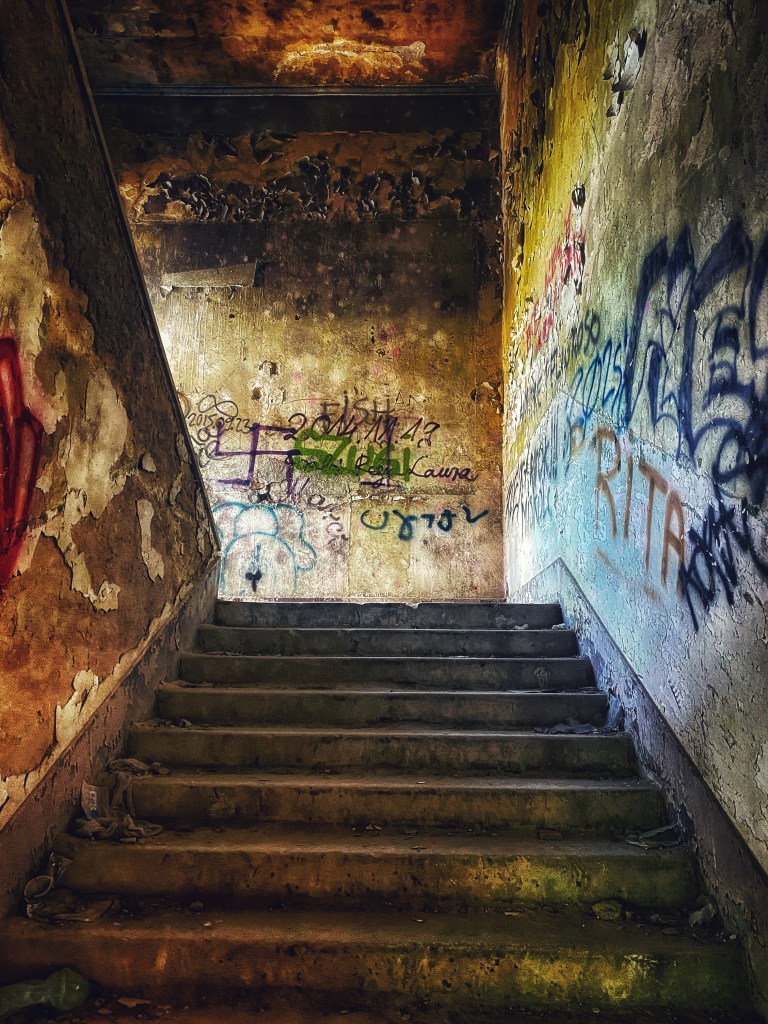
While a little tricky to find, Szentkirályszabadja was such an amazing site to walk through. We mainly stayed on the paved streets and looked from a comfortable distance as many of the buildings are on the brink or in some state of collapse. As we walked the streets of the abandoned city, a number of large trucks drove through on their way to I can only presume transport their goods to their destination. Like many sites in Hungary, this juxtaposition of old and new is always interesting to experience.

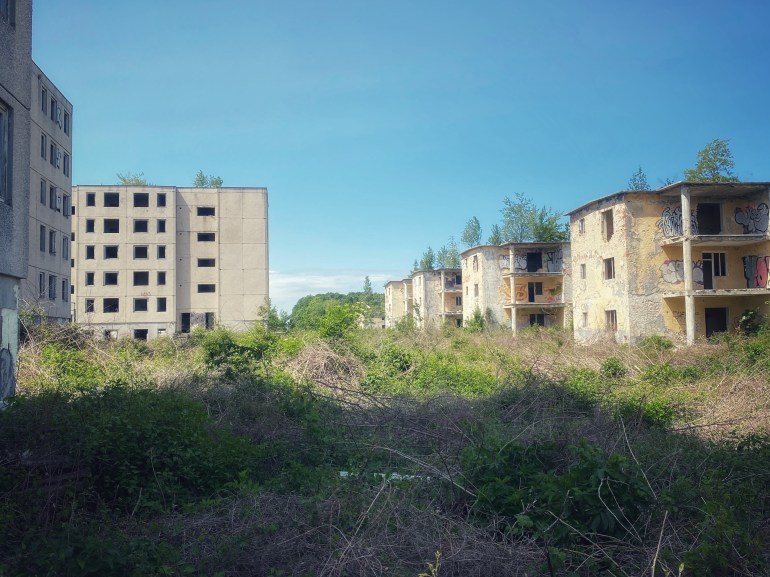
Currently:
Reading: The Sum of Us (Heather McGhee)
Watching: The Shrink Next Door (Apple TV+)
Listening: Films to be Buried With (Brett Goldstein)
Sources:
Atlas Obscura. 2021. “Soviet Ghost Town”. Atlas Obscura. Available here.
Carlo R. 2020. “The Red Army in Hungary – Airbases, Bunkers and Ghost Towns”. Sightraider. Available here.
Fechter, Agnes. 2021. “Abandoned Soviet Barracks in Szentkirályszabadja”. Totally Lost EU. Available here.
Herczeg, Mark. 2012. “Soviet Nuclear Charges Were Stored Here.” Index HU. Available here.
KG. 2019. “This is not Chernobyl, This is Szentkirályszabadja.” Index HU. Available here.
Kovács, Attila. 2019. “Ghost Town, Szentkirályszabadja – The ‘Hungarian Chernobyl’”. Napi Kinscek Tarhaza. Available here.
Simon, Jeffrey. 2003. Hungary and NATO: Problems in Civil-Military Relations. Rowman & Littlefield Publishers: USA.

Leave a comment